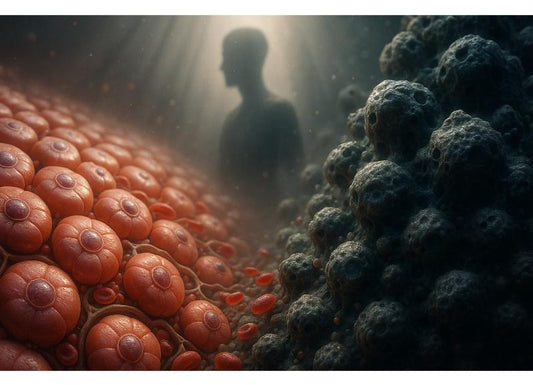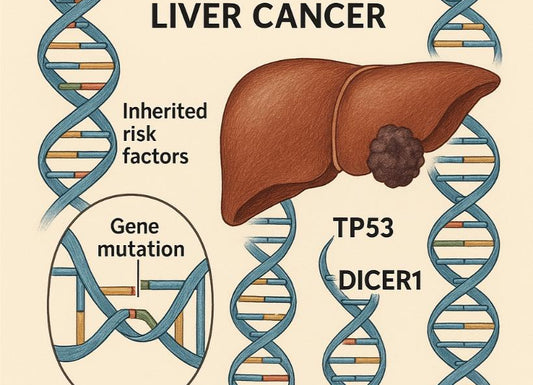Where is Kidney Pain Felt: Diagram, What It Feels Like and When to Worry
 Written By
Blen Shumiye, MD
Written By
Blen Shumiye, MD

If you’ve ever felt a sharp ache near your lower back or side, you might have wondered whether it’s coming from your kidneys. Kidney pain can be confusing; it's often mistaken for back pain, muscle strain, or even digestive issues.
The short answer: kidney pain usually feels like a deep ache or sharp discomfort just below your ribs, on either side of your spine. Unlike regular back pain, it’s often felt deeper inside your body and may come with other signs like nausea, fever, or changes in your urine.
In this guide, you’ll learn exactly where kidney pain is located, how to tell it apart from back pain, what conditions cause it, and when you should see a doctor. You’ll also find at-home care tips and guidance on how to monitor your kidney health.
Where exactly are your kidneys located?
Your kidneys sit deep in your upper abdomen, on either side of your spine just below your ribcage.
-
The right kidney is slightly lower (under the liver).
-
The left kidney sits a bit higher, tucked under your ribs.
They rest behind the abdominal organs, protected by muscle and bone. Because they’re located deep inside your body, kidney pain tends to feel internal and pressure-like, rather than superficial or sore like muscle pain.
What does kidney pain feel like?
Kidney pain often feels like a deep, dull ache or sharp, stabbing pain under your ribs or along your sides (called your “flanks”). Sometimes, kidney pain can also present as sharp pains that are more intense and sudden.
It can appear on one side or both, depending on whether one or both kidneys are affected. Accompanying symptoms such as fever, nausea, or changes in urine can help identify kidney pain.
Common sensations of kidney pain
-
A dull ache under the ribs or in the flank area
-
Sharp, cramping waves of pain (especially with kidney stones)
-
Some people may experience a stabbing sensation, which can be confused with nerve pain such as sciatica
-
Pain that radiates to the abdomen, groin, or inner thigh
-
Tenderness when pressing your back or sides
-
Nausea or vomiting that comes with the pain
Unlike back pain, kidney pain doesn’t change with movement or posture. It often stays constant or comes in waves.
How do you tell kidney pain apart from back pain?

Many people mistake kidney pain for back pain since both can appear near the same area. But there are key differences:
-
Location: Kidney pain is felt deep under the ribs, in the side or flank. Back pain usually sits lower or near the spine, while hip pain is usually felt even lower and more to the side than kidney pain.
-
Pain type: Kidney pain feels deep and steady (or sharp with stones), while back pain tends to be achy and varies with movement.
-
Tenderness: Kidney pain is felt higher up, often in the flank or upper abdomen; back pain is over muscles or joints.
-
Other symptoms: Kidney pain may come with fever, nausea, or changes in urination. Back pain usually doesn’t.
-
Onset: Kidney pain may appear suddenly (stone) or gradually (infection), while back pain often follows heavy lifting, strain, or poor posture.
If stretching, massaging, or resting your back doesn’t help, it could be your kidneys. For a more detailed comparison, read our guide on Kidney Pain vs. Back Pain.
What causes kidney pain?
The causes of kidney pain are not a disease themselves; rather, kidney pain is a symptom of something affecting one or both kidneys. Common causes include:
Identifying the underlying cause of kidney pain is essential for determining the most effective treatment.
1. Kidney stones
Kidney stones are hardened deposits of minerals and salts. Kidney stones form when waste products build up in the kidneys, leading to the development of small, hard clumps. When they block urine flow in the urinary system, they cause intense flank pain that can come in sudden, sharp waves known as renal colic.
Symptoms may include:
-
Severe pain starting in the back or side
-
Pain spreading to the groin or abdomen
-
Blood in the urine (pink or red tint)
-
Nausea or vomiting
Larger stones are more likely to cause severe pain and may require surgical removal.
What helps: Staying hydrated, using prescribed medications (like alpha-blockers), or, in some cases, medical removal.
In some cases, stones may require medical intervention, find out What Size of Kidney Stone Requires Surgery?.
2. Kidney infection (pyelonephritis)
Kidney infections occur when bacteria travel from the bladder up to the kidneys. The result is a constant, deep ache on one or both sides.
You may notice:
-
Fever, chills, or fatigue
-
Painful urination
-
Cloudy or foul-smelling urine
-
Tenderness over the kidneys
What helps: Prompt antibiotic treatment is essential. Untreated infections can lead to kidney damage or sepsis. It is important to seek medical attention promptly if you suspect a kidney infection, especially if you experience severe symptoms.
3. Urinary tract infection (UTI)
A bladder infection can cause pressure and discomfort in the lower back or abdomen. Digestive and kidney diseases can also cause back or abdominal pain, so it is important to distinguish between them to ensure proper diagnosis and treatment. If left untreated, it can spread upward and become a kidney infection.
Look for:
-
Burning sensation when urinating
-
Urgency and frequent urination
-
Lower pelvic pain
-
Cloudy urine
What helps: Antibiotics, hydration, and avoiding bladder irritants like caffeine or alcohol.
Learn more about testing with our essential guide to UTI Tests: The Essential Guide to Understanding and Managing Your Health.
4. Polycystic kidney disease (PKD)
PKD is a genetic disorder that causes multiple fluid-filled cysts to form inside the kidneys. Over time, these cysts enlarge and put pressure on the kidney tissue, which can cause pain, fullness, or swelling.
Symptoms may include:
-
Flank pain or heaviness
-
Blood in urine
-
High blood pressure
-
Abdominal bloating
While there’s no cure, early management can protect kidney function.
5. Kidney injury or trauma
A fall, car accident, or sports injury can cause blunt force trauma, which may bruise or damage the kidney tissue.
Signs of injury:
-
Flank pain or bruising after impact
-
Blood in urine
-
Nausea, dizziness, or faintness
If you experience these symptoms, seek emergency care even if the pain feels mild.
6. Hydronephrosis
Hydronephrosis happens when urine backs up in the kidney, causing it to swell.
It may result from a stone, prostate enlargement, or other blockages.
You might feel:
-
Dull or throbbing flank pain
-
Nausea
-
Trouble urinating
Early treatment is key to prevent permanent kidney damage.
7. Kidney cancer
Persistent flank pain without infection or stones could point to a more serious cause. In some cases, persistent pain may be due to other kidney disorders, which can present with similar symptoms and should not be overlooked.
Kidney cancer can cause dull, constant pain in the side or abdomen.
Other symptoms:
-
Blood in urine
-
A mass or lump in your side
-
Unexplained fatigue or weight loss
If pain persists for weeks without clear cause, see your healthcare provider.
When should you worry about kidney pain?
Not every ache in your back means something serious but some warning signs mean it’s time to call your doctor.
Seek medical care if you notice the following symptoms:
-
Pain that’s severe, constant, or one-sided
-
Fever or chills
-
Blood in your urine
-
Pain with urination
-
Nausea or vomiting
-
Swelling around your eyes, feet, or ankles
If you experience any of these symptoms, it is important to seek medical attention promptly, as they may indicate underlying health problems such as kidney infections, stones, or other serious conditions.
Go to the ER immediately if the pain is unbearable or you can’t pass urine. These could signal a kidney blockage or infection that needs urgent care.
How do doctors find out what’s causing kidney pain?

Your doctor will start by reviewing your symptoms and examining your back or side (checking for CVA tenderness pain when gently tapping near your kidneys). An accurate diagnosis is essential to determine the underlying cause of kidney pain and ensure proper treatment.
Common tests include:
-
Urinalysis: Detects infection, blood, or crystals.
-
Blood tests (creatinine, BUN): Assess kidney function.
-
Imaging: Ultrasound, CT scan, or MRI to visualize stones, swelling, or masses.
-
Urine culture: Identifies the bacteria causing infection.
These help pinpoint the exact problem and guide treatment.
How is kidney pain treated?
Treatment depends on the cause and may focus on easing discomfort while addressing the underlying issue:
-
Kidney stones: Hydration, pain relief to ease discomfort, and possible removal; dietary changes to prevent recurrence.
-
Infection: Antibiotics, fluids, and rest.
-
Hydronephrosis: Procedures to relieve blockage; pain management to ease discomfort.
-
PKD: Blood pressure control and lifestyle management.
-
Injury: Monitoring, rest, or surgery if needed.
-
Cancer: Surgery or targeted therapy, plus supportive care to ease discomfort.
Always follow your doctor’s advice and avoid overusing painkillers that can harm your kidneys.
How can you relieve mild kidney pain at home?
If your doctor says it’s safe to manage at home, these steps may help:
-
Stay hydrated: Drink enough water to keep urine pale yellow.
-
Apply gentle heat: A warm compress or heating pad can soothe discomfort.
-
Rest: Give your body time to heal.
-
Avoid caffeine and alcohol: Both can strain your kidneys.
-
Use acetaminophen (Tylenol): It’s kidney-safe in normal doses. Avoid ibuprofen unless prescribed.
These are supportive measures not substitutes for professional care.
How to keep your kidneys healthy
Your kidneys quietly filter about 200 quarts of blood a day so taking care of them matters.
Here’s how to keep them strong and pain-free:
-
Drink enough water daily
Hydration prevents kidney stones and flushes out waste. -
Eat balanced, low-salt meals
Cut down on processed foods and excess protein. Choose fresh fruits, vegetables, and whole grains. -
Control blood pressure and blood sugar
These are the top causes of kidney disease. Regular monitoring helps prevent damage. -
Avoid smoking and limit alcohol
Both reduce blood flow to your kidneys and speed up decline. -
Exercise regularly
Movement improves circulation and reduces risk factors like obesity and hypertension. -
Get tested regularly
If you have diabetes, high blood pressure, or family kidney disease, routine tests can catch problems early. Early detection of chronic kidney disease can help prevent complications and improve long-term outcomes.
Kidney pain that changes throughout the day
You might notice your pain feels worse in the morning or evening.
This pattern can offer clues:
-
Morning pain: Often linked to dehydration overnight or stones shifting.
-
Evening pain: May worsen after physical activity or fluid buildup.
Keeping a pain diary can help your doctor understand triggers and timing.
When to call your doctor

Call your healthcare provider if you experience:
-
Ongoing flank or back pain
-
Blood in urine
-
Pain when urinating
-
Fever, chills, or nausea
These symptoms may indicate a kidney problem that requires prompt attention.
Seek emergency care immediately if pain is severe, you can’t urinate, or you have high fever; these can indicate an infection or blockage.
Final Thought
Kidney pain should never be ignored. Because it can signal anything from a simple infection to a more serious condition, getting checked by a healthcare provider is the safest approach especially if the pain is strong, persistent, or comes with symptoms like fever, nausea, or changes in your urine. The good news is that most kidney problems are highly treatable when caught early. Staying hydrated, managing your blood pressure and blood sugar, eating a balanced diet, and having regular checkups can go a long way toward keeping your kidneys healthy for life. Early detection and management of kidney diseases can significantly improve outcomes.
Related sources
-
Can Kidney Disease Cause Weight Gain? Insights on Connection
-
7-Day Meal Plan For Kidney Disease and Diabetes—Supporting Your Kidneys
References
Clinic, C. (2023, September 7). Kidney Pain: Causes, Treatment & When To Call A Doctor. Cleveland Clinic. https://my.clevelandclinic.org/health/symptoms/17688-kidney-pain
https://www.facebook.com/WebMD. (2020, March 26). Kidney Pain: Symptoms and Treatment. WebMD. https://www.webmd.com/a-to-z-guides/kidney-pain
Kidney pain. (2025). Mayo Clinic. https://www.mayoclinic.org/symptoms/kidney-pain/basics/definition/sym-20050902
Kidney pain Causes. (2025). Mayo Clinic. https://www.mayoclinic.org/symptoms/kidney-pain/basics/causes/sym-20050902
NHS website. (2018, January). Kidney infection. Nhs.uk. https://www.nhs.uk/conditions/kidney-infection/

Dr. Blen is a seasoned medical writer and General Practitioner with over five years of clinical experience. She blends deep medical expertise with a gift for clear, compassionate communication to create evidence-based content that informs and empowers. Her work spans clinical research, patient education, and health journalism, establishing her as a trusted voice in both professional and public health spheres.



